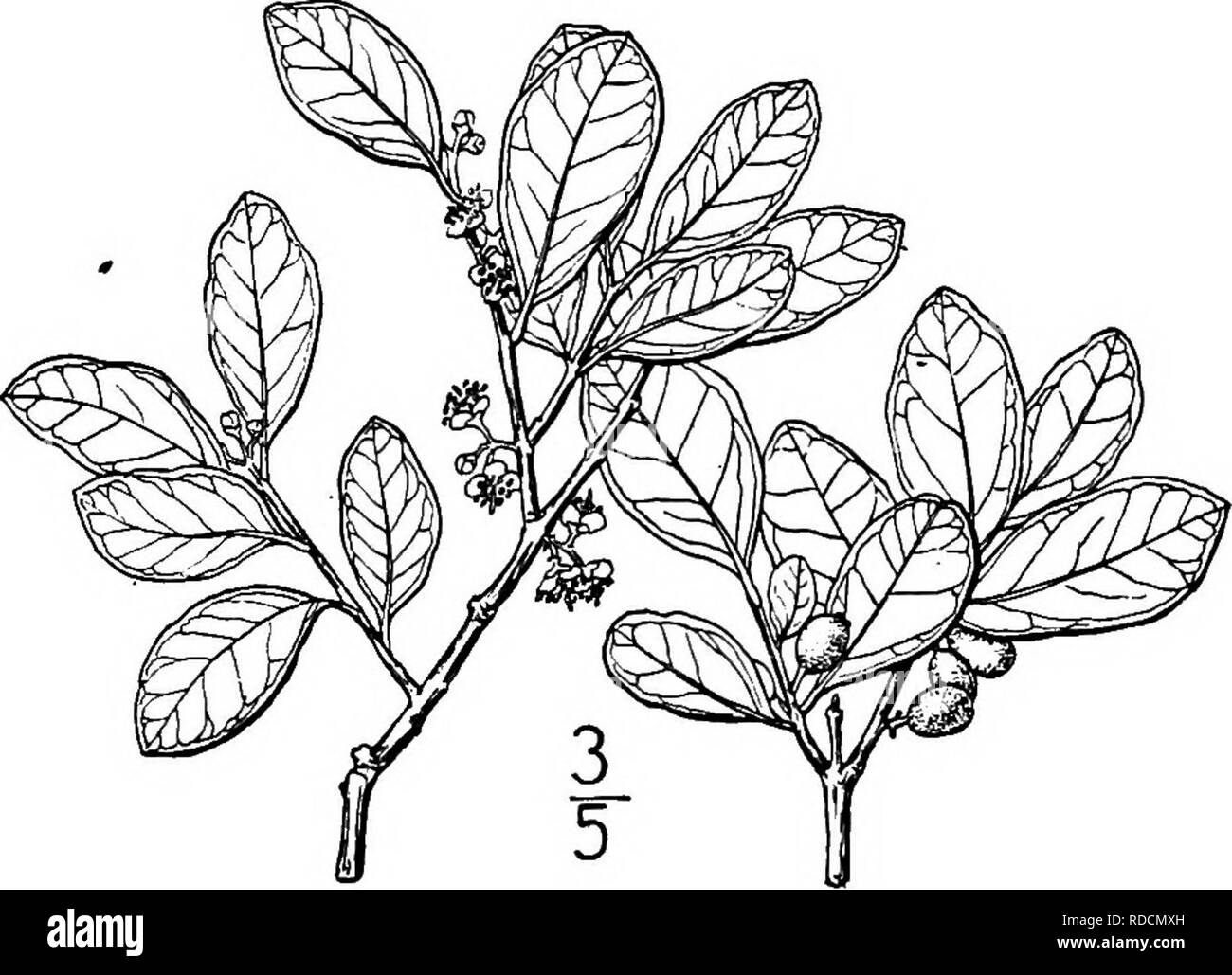. North American trees : being descriptions and illustrations of the trees growing independently of cultivation in North America, north of Mexico and the West Indies . Trees. 724 Stoppers They have opposite, usually leathery, feather-veined entire leaves, without stip- ules. The inflorescence is centripetal, the flowers variously clustered, or soli- tary, with small bracts and bractlets. The calyx-tube is globose to top-shaped, the lobes 4 or 5; the petals are inserted on the margin of the disk, usually 4, rarely 5, spreading; stamens many, their filaments thread-like, separate, in several row

Image details
Contributor:
The Book Worm / Alamy Stock PhotoImage ID:
RDCMXHFile size:
7.2 MB (325.9 KB Compressed download)Releases:
Model - no | Property - noDo I need a release?Dimensions:
1860 x 1344 px | 31.5 x 22.8 cm | 12.4 x 9 inches | 150dpiMore information:
This image is a public domain image, which means either that copyright has expired in the image or the copyright holder has waived their copyright. Alamy charges you a fee for access to the high resolution copy of the image.
This image could have imperfections as it’s either historical or reportage.
. North American trees : being descriptions and illustrations of the trees growing independently of cultivation in North America, north of Mexico and the West Indies . Trees. 724 Stoppers They have opposite, usually leathery, feather-veined entire leaves, without stip- ules. The inflorescence is centripetal, the flowers variously clustered, or soli- tary, with small bracts and bractlets. The calyx-tube is globose to top-shaped, the lobes 4 or 5; the petals are inserted on the margin of the disk, usually 4, rarely 5, spreading; stamens many, their filaments thread-like, separate, in several rows, or sUghtly united at the base into 4 groups, the anthers versatile; ovary ses- sile, 2- to 3-celled, with several ovules in each cell; style simple and thread-Uke, terminated by a stigmatic tip. The fruit a pulpy, dryish, or leathery berry, capped by the persistent calyx; seeds i to 4, globose or variously flattened. The name is in honor of Prince Eugene of Savoy (i 663-1736), an Austrian general and patron of botany and horticulture. The species that are known to occur in our area all become arborescent. Flowers in short racemes. Leaves oblong to cuneate-obovate; fruit longer than broad. Leaves ovate to elliptic; fruit broader than long. Flowers solitary or umbellate. Peduncles shorter than the leaves. Leaves acute or subacuminate; fruit thicker than long. Leaves abruptly acuminate; fruit about as long as thick. Peduncles longer than the leaves. 1. E. buxijolia. 2. E. axillaris. 3. E. rhombea. 4. E. conjusa. 5. E. longipes. I. SPANISH STOPPER — Eugenia biudfoUa (Swartz) Willdenow Myrtus huxijolia Swartz. Myrtus axillaris Poiret, not Swartz Also called Gurgcon stopper; this small tree or shrub of the West Indies enters our area in southern peninsular Florida and the Keys, where it grows in sandy or rocky soil and attains a height of 6 meters, with a trunk diameter of 3 dm. The bark is about 3 mm. thick, light reddish brown, and scaly. The twigs are round, slender, with red